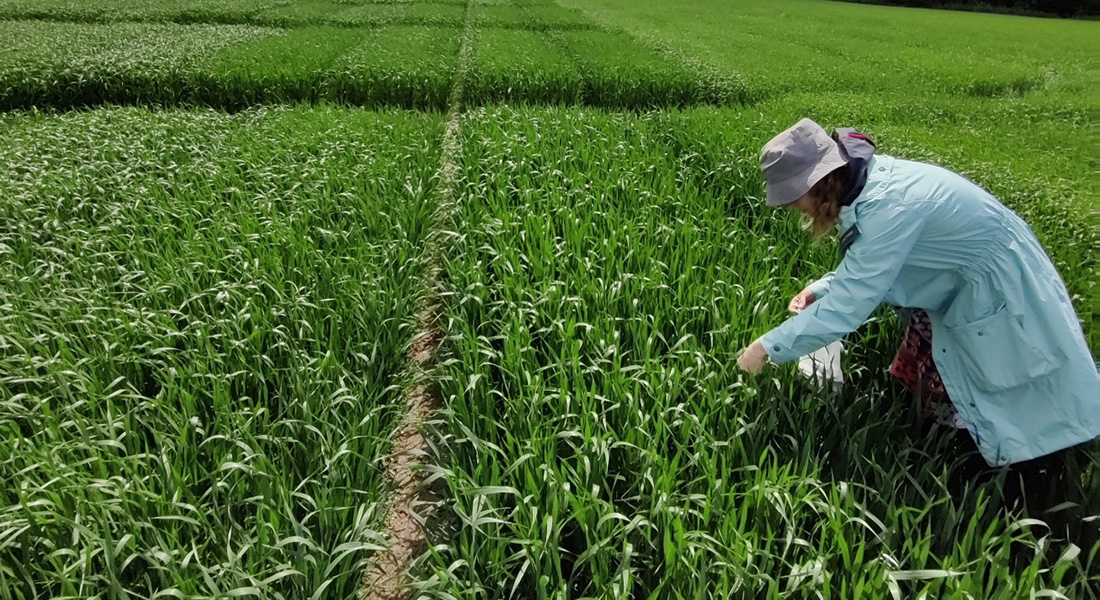First AQRIFood leaf samples are ready for nutrient analysis
Once analyzed, the samples collected from our Sejet breeding plots will hopefully reveal the best quality crops for plant-based foods.

The field team from UCPH spent a day outdoors collecting leaf samples from the crops growing at the AQRIFood partner Sejet. We collected leaf samples from all 10 cultivars of faba beans, pea and oats, and noted the height and growth stage of the crops. We will analyze the samples for nutrient and protein content, and isotope ratios of carbon and nitrogen, so that we can follow the growth and nutritional status of the different cultivars in the field.
![]()
To do our analysis, we use a wide range of different methods for evaluating plant quality during the growth season and after harvest. We use some of these methods directly in the field because they are non-destructive to the plants. For instance, Chlorophyll a fluorescence can be measured on plant leaves in the field and provides information about the content of manganese and phosphorous – two essential plant nutrients.
Near-infrared Spectroscopy (NIR) represents another non-destructive method, which can provide information about the nitrogen content of plants as well as a wide range of organic compounds when combined with advanced statistics.
From farm to lab table
In the laboratory, we analyze all essential plant nutrients by inductively coupled plasma-optical emission spectroscopy (ICP-OES), a technique that efficiently quantifies both macro- and micronutrients in plant tissue. We also analyze leaf samples by isotope-ratio mass spectrometry (IRMS), which is a highly sensitive method that determines the total carbon (C) and nitrogen (N) content as well as their isotope ratios (the relative abundance of the heavy vs the light isotope, 13C/12C and 15N/14N).
This can provide us with information about water stress during the growth season, type of fertilizers used and how efficient plants collaborate with microorganisms to conduct biological nitrogen fixation.
We hope that all of the information we collect and analyze will aid in choosing the best high-quality cultivars of the different crops.
